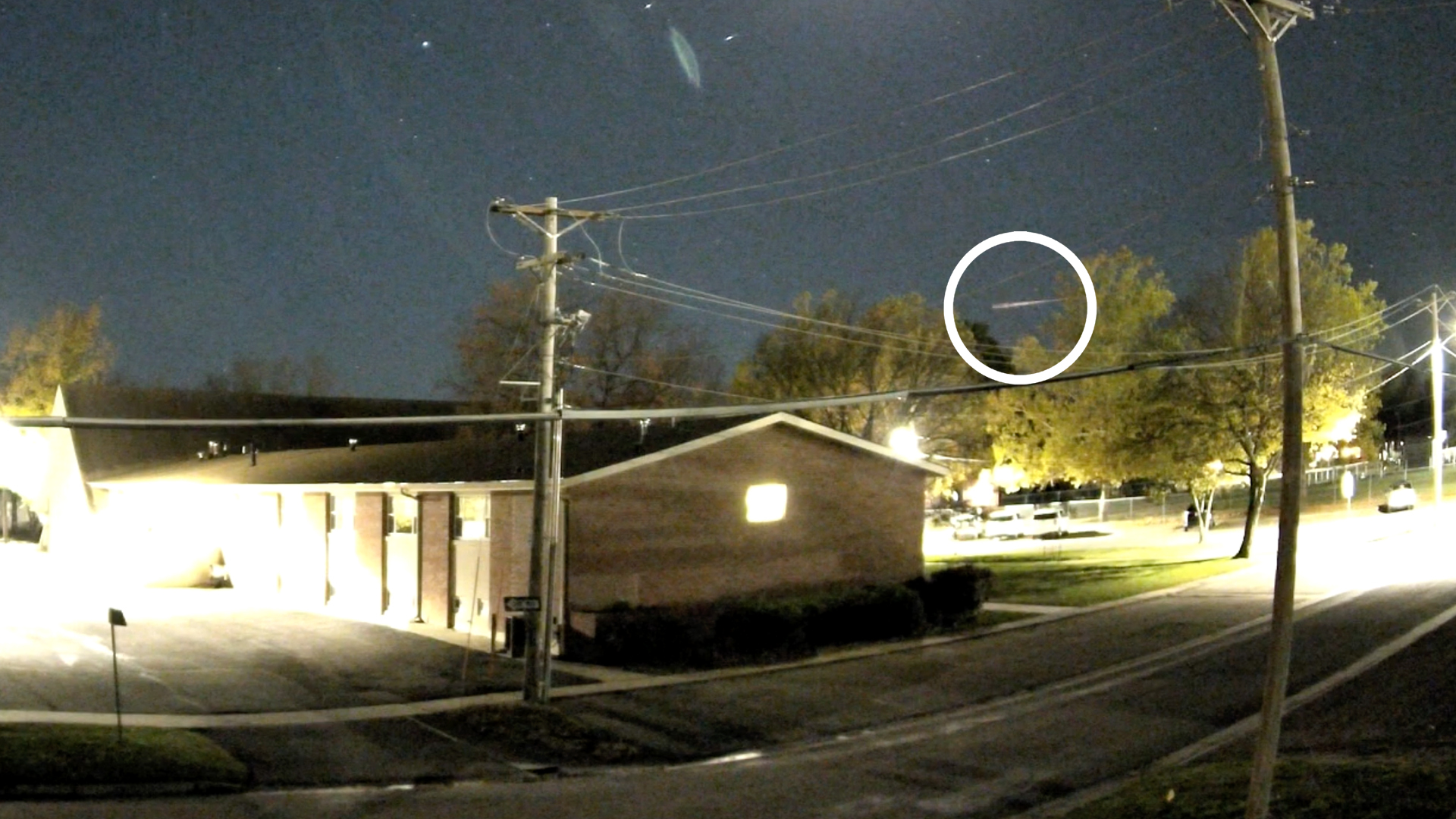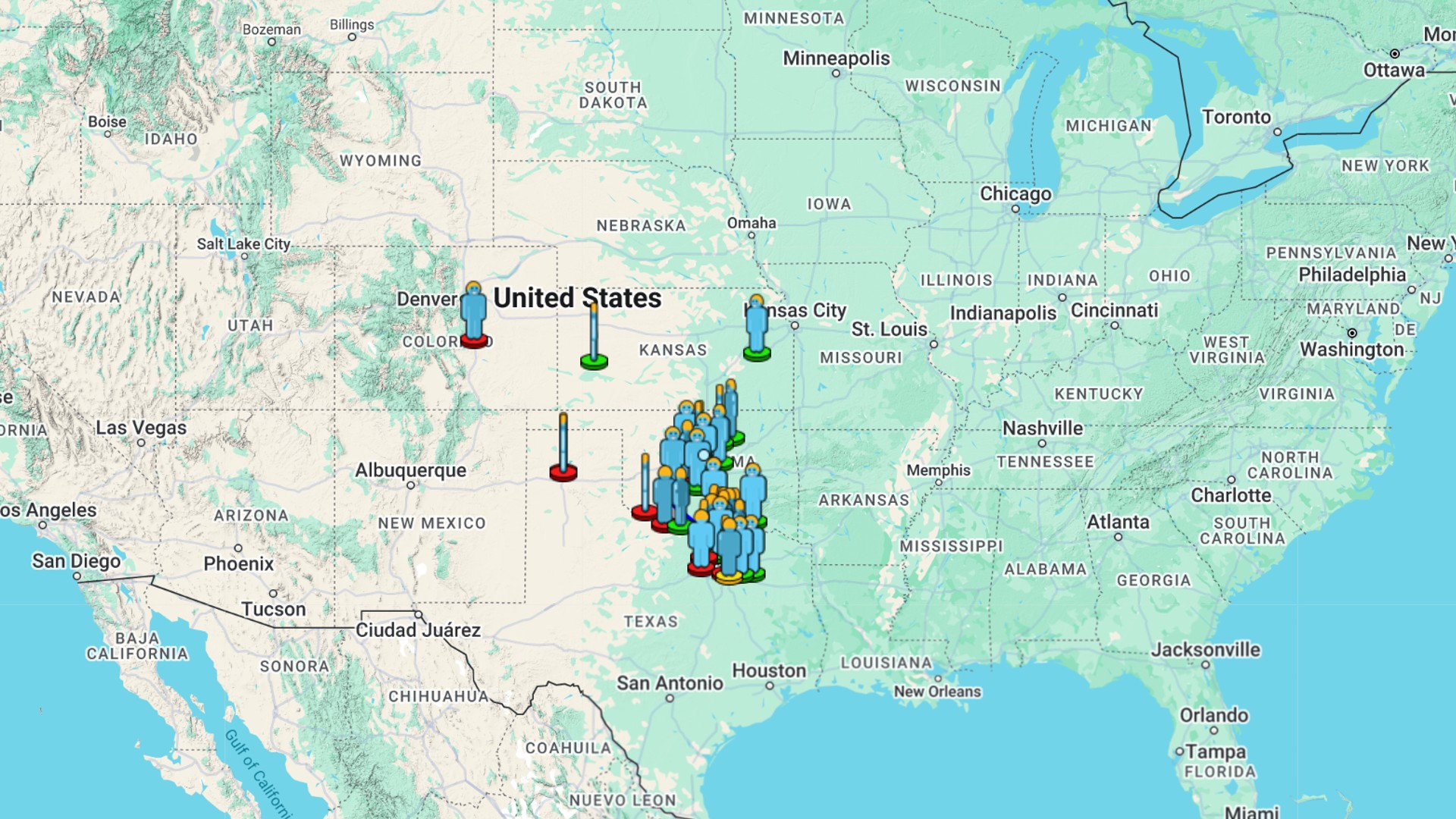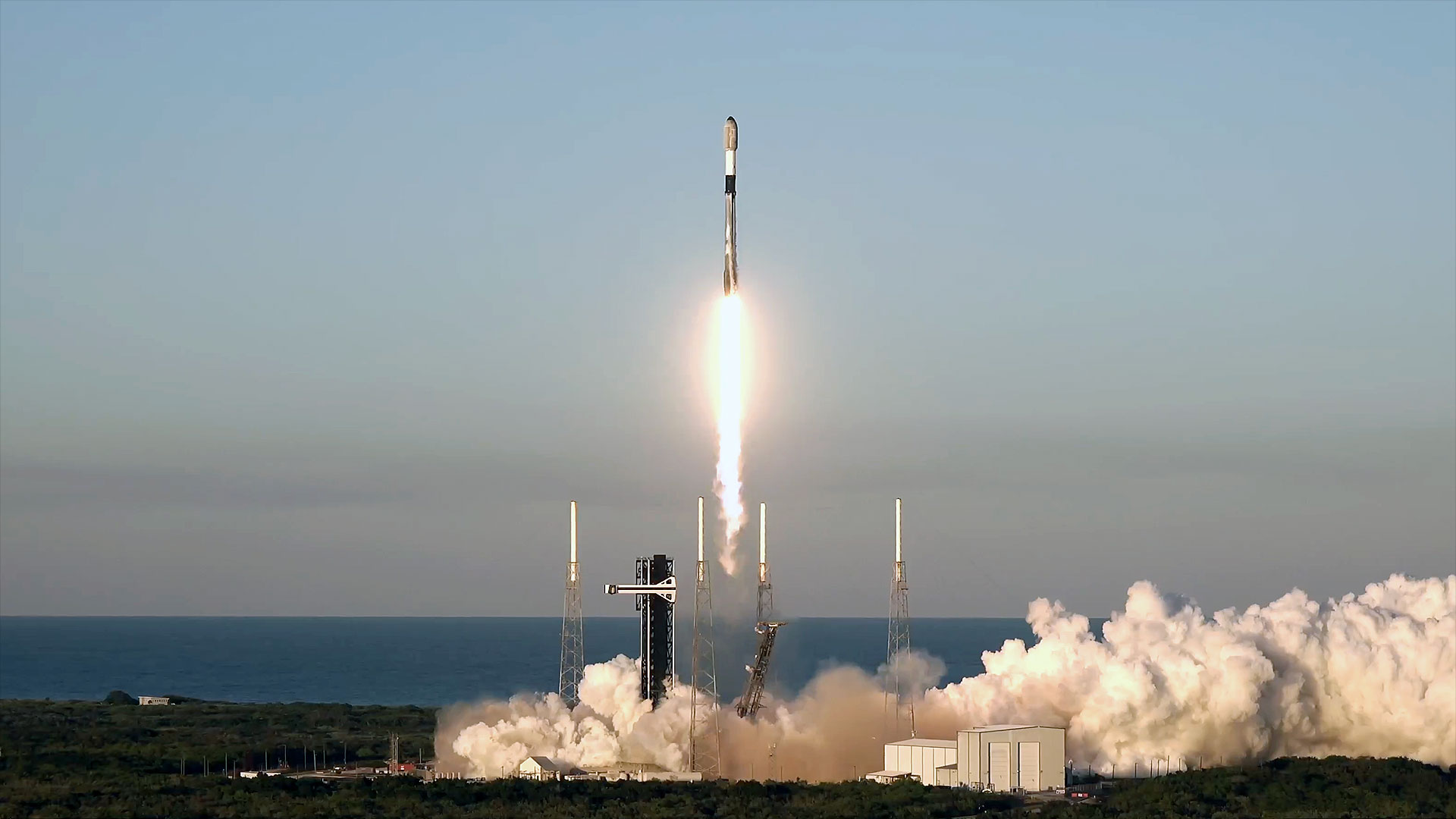Starlink satellite falls to Earth, burns up as stunning fireball over US (video)
The bright object was likely a Starlink satellite burning up in Earth's atmosphere as it fell back toward our planet.
A brilliant fireball that lit up the skies over four U.S. states is reported to be from the fiery reentry of a SpaceX Starlink satellite.
Dozens of eyewitnesses reported seeing a meteor on Saturday (Nov. 9) just after 10:00 p.m. Central Standard Time (11:00 p.m. EST or 0400 GMT on Nov. 10). The American Meteor Society received 36 different reports about the bright fireball as it passed over Colorado, Kansas, Texas and Oklahoma. The sightings were mostly clustered around the Oklahoma City and Dallas-Fort Worth regions.
As it turns out, this was likely no ordinary meteor. It appears to have been SpaceX's Starlink-4682 spacecraft, part of a group of 54 satellites that launched in 2022 on the Starlink 4-23 mission.
Some ad blockers can disable our video player.
According to astronomer and spacecraft tracker Jonathan McDowell of the Harvard–Smithsonian Center for Astrophysics, the bright object was likely a Starlink satellite burning up in Earth's atmosphere as it fell back toward our planet.
The particular Starlink spacecraft, designated Starlink-4682, appears to have reentered "on a track over Idaho, Wyoming, Colorado and Oklahoma and appears to have been widely observed," McDowell posted to X on Nov. 10.
Starlink-4682, launched in 2022 Aug, reentered at 0403 UTC Nov 10 (9:03pm MST/10:03 pm CST Nov 9) on a track over Idaho, Wyoming, Colorado and Oklahoma and appears to have been widely observed pic.twitter.com/u4sByf2SLeNovember 10, 2024
According to eyewitness reports submitted to the American Meteor Society (AMS), the fireball was impressive. "Best sighting ever!," wrote witness Kevin W. of McKinney, Texas.
"Most amazing thing I've seen in a really long time," wrote another witness in Canton, Texas.
Breaking space news, the latest updates on rocket launches, skywatching events and more!
Other witnesses described the fireball as it appeared to break up into smaller fiery pieces of debris in the sky. "This was a fragmented/fragmenting fireball. I saw it as a glowing area that became more clearly a large fireball that had fragmented," wrote Ryan T. of Kaufman, Texas.
As more and more of these Starlink reentries occur (and as SpaceX continues to launch them weekly), some astronomers and environmental scientists say the effects of these reentries aren't well understood and could be harming Earth's atmosphere.
As these satellites burn up in the atmosphere, they release harmful aluminum oxide, which can harm Earth's protective ozone layer and alter its ability to reflect sunlight; both of these factors change the temperature of the upper atmosphere. "If we don't do anything, we will see the impact globally within the next 10 years," Minkwan Kim, an associate professor of astronautics at the University of Southampton in the U.K., has told Space.com.
While these reentries occasionally produce fireballs visible from the ground, most go completely unnoticed. In fact, McDowell previously told Space.com, a Starlink satellite reenters the atmosphere almost every day.
"Sometimes multiple," McDowell said.

Brett is curious about emerging aerospace technologies, alternative launch concepts, military space developments and uncrewed aircraft systems. Brett's work has appeared on Scientific American, The War Zone, Popular Science, the History Channel, Science Discovery and more. Brett has English degrees from Clemson University and the University of North Carolina at Charlotte. In his free time, Brett enjoys skywatching throughout the dark skies of the Appalachian mountains.


